10Avoid Overly Ripe Fruit
As a fruit ripens, its sugars break down into simple, and better-tasting, sugars that have higher glycaemic indexes. Therefore avoid excessively ripe fruits; they create excess fat.
Advertisements
Bananas are a perfect example of how the ripeness of a fruit influences its glycaemic index. Starch is the principal ingredient in an underripe banana, a low glycaemic-index carbohydrate.
As the banana ripens its starch turns into free sugars, and the glycaemic index increases by 70%, changing the fruit from a Good Calorie one to a Bad Calorie one. Although there have been no scientific studies, the same process is likely to occur with other fruits, such as pears and peaches.
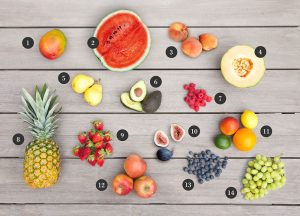
You do not have to eat green, unripe fruit. Rather, choose firm yellow bananas and avoid mushy, brown-spotted ones. Other fruits do not have to be hard; choose soft but not mushy or obviously juicy ones.
Many health bars sell fruit drinks that are freshly prepared in a blender. Frequently, they use overly ripe fruit (so no one will see the condition of the fruit). It is probably best to avoid those that do.
9Avoid Processed Foods
Food processing includes a wide variety of manufacturing techniques (freezing, canning, baking, drying and pasteurising) that make food easier to handle or to use.
The more processed the food, the more blood sugar it makes. Dr Janet Brand and her colleagues at the University of Sydney found that processing increased the glycaemic mdex of com by 60%; of rice, by 90%; and of potatoes, by 50%.
Ingredients such as salt, sugar and fat are sometimes added to processed foods to make their flavour more appealing and to prolong their shelf life, or in some cases to contribute to the food’s structure, such as salt in bread or sugar in cakes.
Most ready-to-eat foods including almost any food on a shelf in a food shop that are packaged in a bag or a box are processed foods. Foods that have been pre-cooked or altered so they take less time to cook are processed foods.
Examples of common processed foods include
- breakfast cereals
- cheese
- tinned vegetables
- bread
- savoury snacks, such as crisps
- meat products, such as bacon
- “convenience foods”, such as microwave meals or ready meals
- drinks, such as milk or soft drinks
8Avoid Foods That Are High in Fat
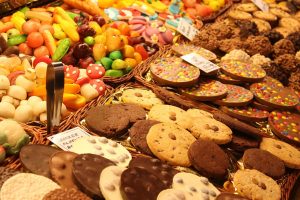
Over the past 100 years, the percentage of calories that the average person derives from fat has increased. This is a disaster. The ingestion of large amounts of fat decreases the rate at which we burn energy, making it harder to lose weight. It also ignites the Starvation Response, making it easy to manufacture more fat.
How much fat is too much? Many governmental agencies recommend that no more than 30% of our daily calories should be from fat. Therefore, any food that derives more than 30% of its calories from fat is a Bad Calorie.
Sometimes a low-fat food that is high on the glycaemic index can produce more fat than can a high glycaemic-index food combined with the proper amount of vegetable fat; therefore, you should not automaticalty consume any food that is advertised as being low in fat.
Studies show that continued consumption of trans fat —even as little as one gram of it—can increase “bad” cholesterol, put you at a greater risk for heart disease, and possibly trigger type 2 diabetes (particularly in women).
Foods That Contain Bad Fat
- Microwaved popcorn
- Potato chips
- Crackers
- Frozen food
- French fries
- Cookies
- Vegetable shortening
- Margarine Sticks
7Avoid Saturated Fats; Substitute Unsaturated Fats
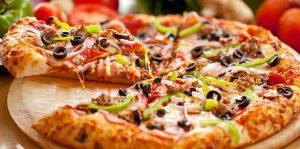
Dietary studies that recommend a low-fat diet usually refer to the elimination of saturated animal fats. Saturated fats should make up less than 10% of your caloric intake. However, diets that are extraordinarily low in fat seem unnecessary when the beneficial effects of unsaturated fats are considered.
Eating a little unsaturated fat may actually reduce the total fat you create when you are faced with meals of Bad Calorie carbohydrates.
Unsaturated fats also help you lose weight in three other ways:
- When you eat a high ratio of unsaturated to saturated fats, you create less fat than if all those fat calories were saturated fat.
- Your body prefers to burn unsaturated fats, rather than to place them in fat cells.
- In people who suffer from the Starvation Response, but not in lean people, the metabolism of other foods is 50% higher after meals that are high in unsaturated fats.
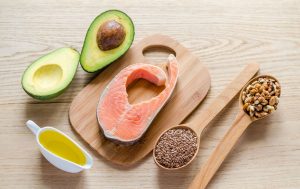
Foods that contain unsaturated fats
- Olive Oil
- Salmon
- Almonds
- Natural Peanut Butter
- Avocados
6Avoid Overcooked Carbohydrates
Eating overcooked foods can double the blood sugar available for conversion into fat. Why does overcooking do so?
Because it destroys the fibres needed to prevent carbohydrates from being converted into blood sugar.
Over-cooking toast and potatoes produces a toxic chemical called acrylamide – which could be a human carcinogen.
Starchy carbs such as spuds, bread and pizza dough – as well as root vegetables including beetroot, turnips, swede and parsnips – are all thought to produce acrylamide.
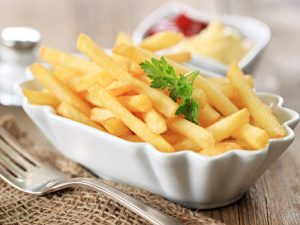
You can lower a carbohydrate’s fat-forming potential by slightly under-cooking it. This rule applies to almost all sources of carbohydrates – rice, potatoes and vegetables. All pastas, except canned pasta, appear to be an exception to this rule. It is one of the simplest weight-loss tricks.
Advertisements
5Avoid Canned Starches and Legumes
Canning drastically increases the glycaemic index of starches. Canned pasta, for example, has twice the glycaemic index of home-cooked pasta. It also stimulates the body to release nearly 50% more insulin, thereby activating fat-forming enzymes.
Canning also doubles the glycaemic index of legumes, such as kidney beans and lentils. Thus it raises them from the best Good Calories of foods with barely acceptable levels on the glycaemic index.
Most canned vegetables, soups and sauces have added salt. Processed foods are major contributors of sodium in our diets, because salt is commonly added to preserve foods and extend shelf life.
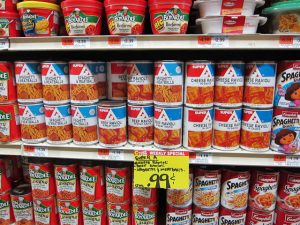
We need some sodium, but we often consume much more than the Dietary Guidelines for Americans’ recommendation of less than 2,300 milligrams a day.
4Avoid Fructose
The most commonly used sweetener in manufactured foods is corn syrup. Fructose, the active ingredient, is a greater part of the Western diet than sugar. The average person consumes 15% of his or her calories as fructose.
Of the many forms of sugar in our diet, fructose is the easiest for the body to convert into fat. When it is combined with fat, such as in a chocolate bar, fructose is capable of producing more new fat than sugar.
Fructose can only be metabolized by the liver and can’t be used for energy by your body’s cells. It’s therefore not only completely useless for the body, but is also a toxin in high enough amount because the job of the liver is to get rid of it, mainly by transforming it into fat and sending that fat to our fat cells.
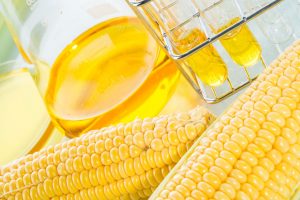
Excess fructose also affects brain functioning, especially as it relates to appetite regulation. It has also been shown to impair memory in rats.
3Avoid Alcohol Before a Meal
Alcohol may contribute to weight gain for reasons other than just being a source of empty calories. Recent studies show that alcohol may increase your appetite, as well.
There are several studies suggesting that alcohol intake before a meal stimulates appetite and increases food intake later on in the meal. Researchers call this the apéritif effect.
In one study on 24 healthy men, researchers found that consuming an alcoholic beverage (with 20g of alcohol) before lunch led to an 11% increase in total food intake during the meal, and a 24% increase in high-fat savory foods. The alcohol also lead to greater food reward for savory foods.
Alcohol raises blood sugar just as strongly as if it were the worst Bad Calorie. If you drink alcohol before a meal, it turns the food that follows into Bad Calories by raising your
blood-sugar response.
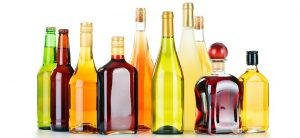
If you must have alcohol with your meal, drink it late in the meal, and then only if you are eating a meal rich in Good Calories.
2Avoid Smoking Before or During Meals
Swedish doctors reported that aside from its other harmful effects, smoking produces a sudden rise in blood sugar, followed by a sharp decrease immediately after the nicotine high vanishes. This reaction can increase the formation of fat. When you can possibly do so, you should let more than an hour pass between smoking and eating.
Some people use smoking as a dietary aid. They would rather fill their mouths with cigarettes than with food. This strategy is doomed to backfire because low blood sugar response will increase their appetite.
Smoking also affects the body’s ability to absorb a variety of vitamins and minerals including calcium and vitamins C and D. Smoking also affects the body’s circulation by causing blood vessels to narrow and become blocked because of an increased build up of fatty deposits. Stopping smoking is an effective method of helping avoid deficiencies of vitamins.

Smoking supplies the brain with nicotine, altering and suppressing a smoker’s ability to taste flavours. The reduced oxygen supply from inhaling tobacco smoke also contributes to the dulling of flavour recognition in the mouth. When smokers stop they regain the sense of taste they had before they smoked and food really does taste better.
1Avoid Bad Calories Before and During Exercise
Exercise helps you to lose weight by lowering blood sugar levels, reversing insulin resistance and lowering triglycerides.
However, ingesting Bad Calorie carbohydrates before or during aerobic and anaerobic exercise makes you burn glycogen instead of blood sugar and promotes insulin resistance, thus increasing the availability of blood sugar for the formation of fat.
This problem is particularly relevant because most exercise drinks, including many that are
designed to replace electrolytes, are Bad Calories.
When you consume these drinks while exercising, you negate the benefits of exercise.
What Not to Eat Before and After a Workout
Advertisements
- High Fat, Fast Food
- Salty Snacks
- Bacon
- Pizza
- Sugary Offenders
- Soda and Fruit Drinks
- Milk Chocolate
- Doughnuts and Pastries
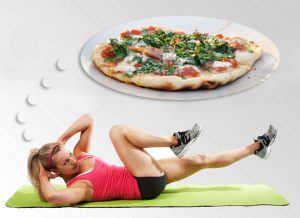
Advertisements

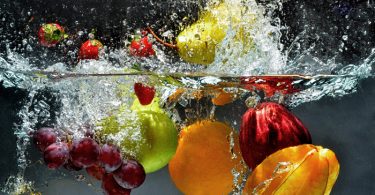

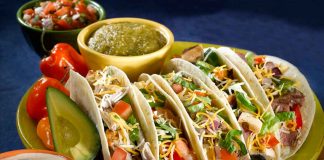

Comments